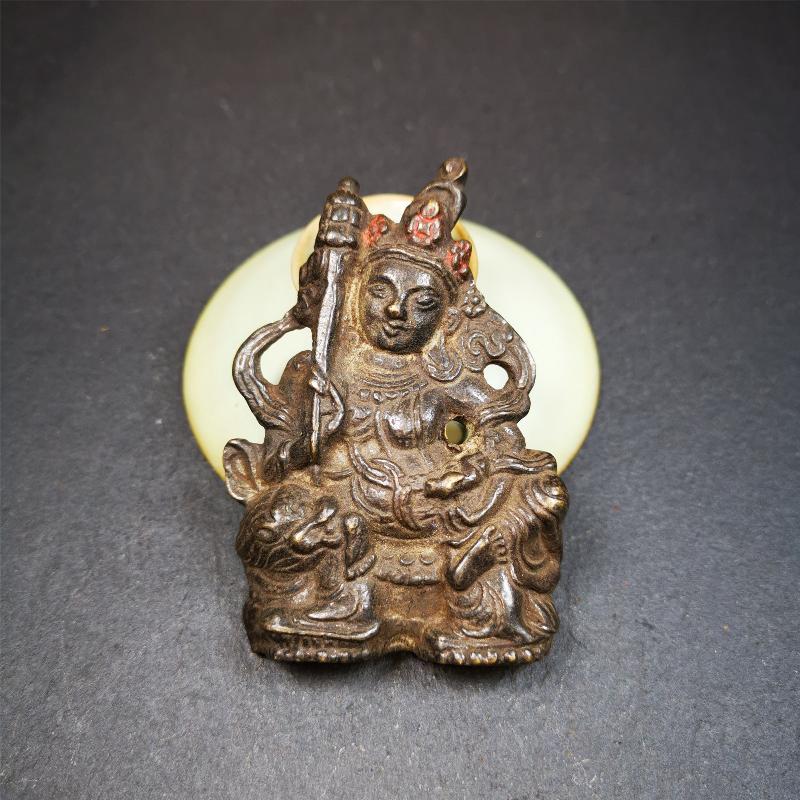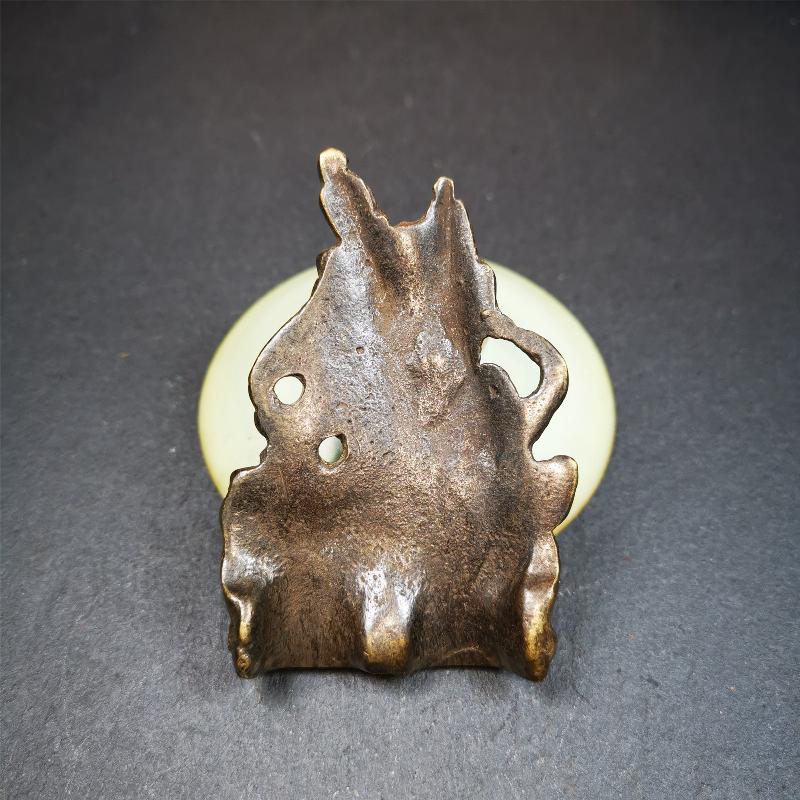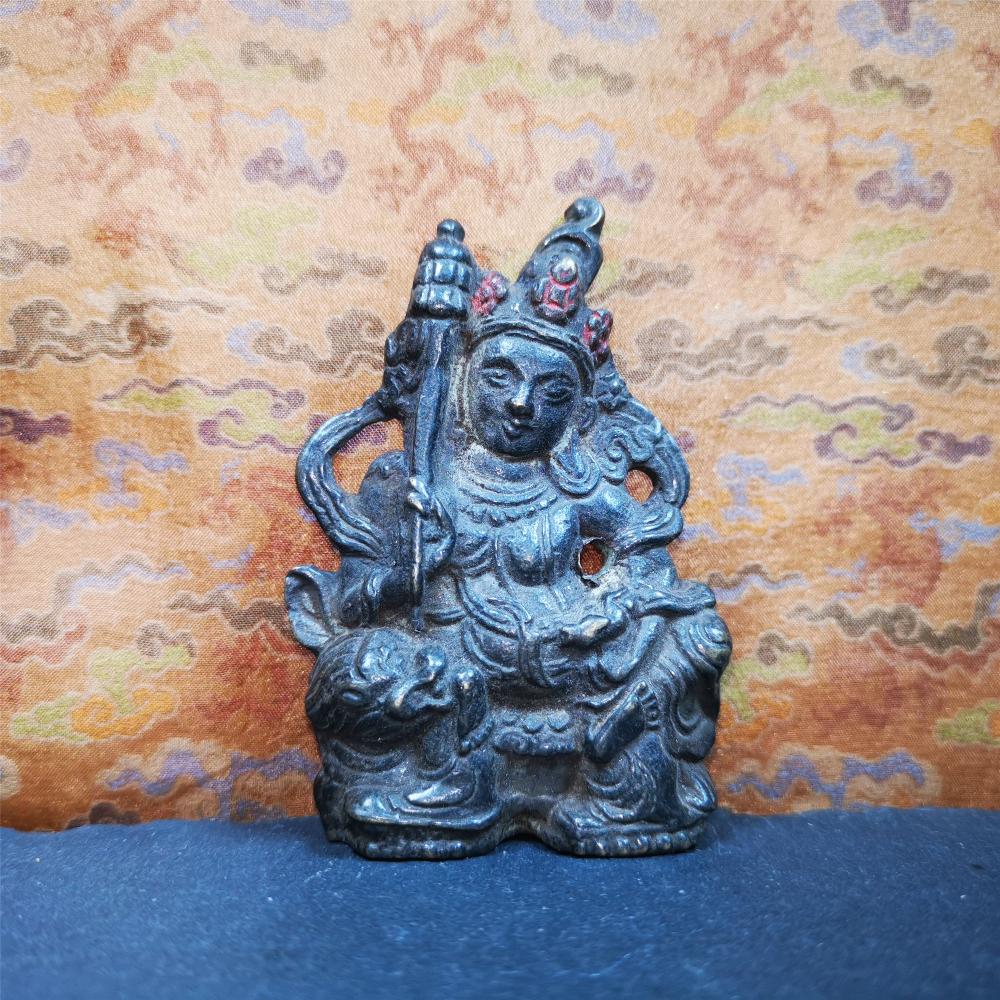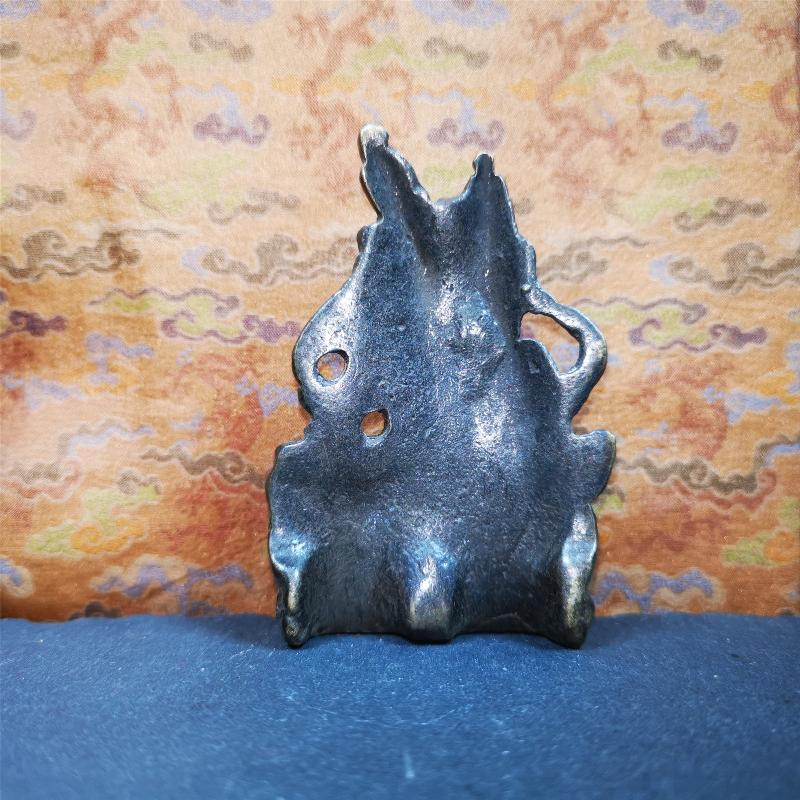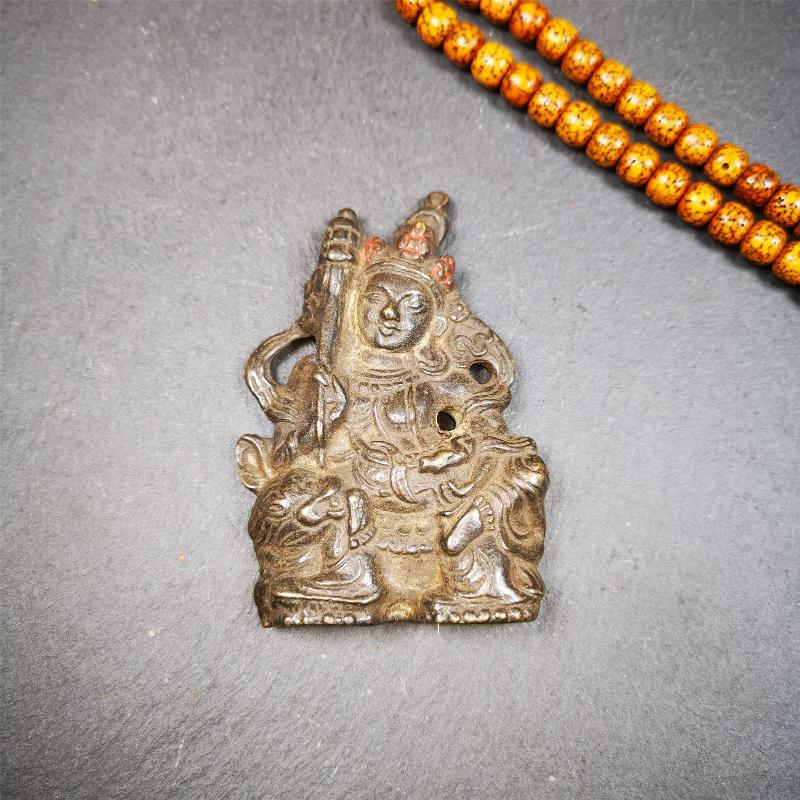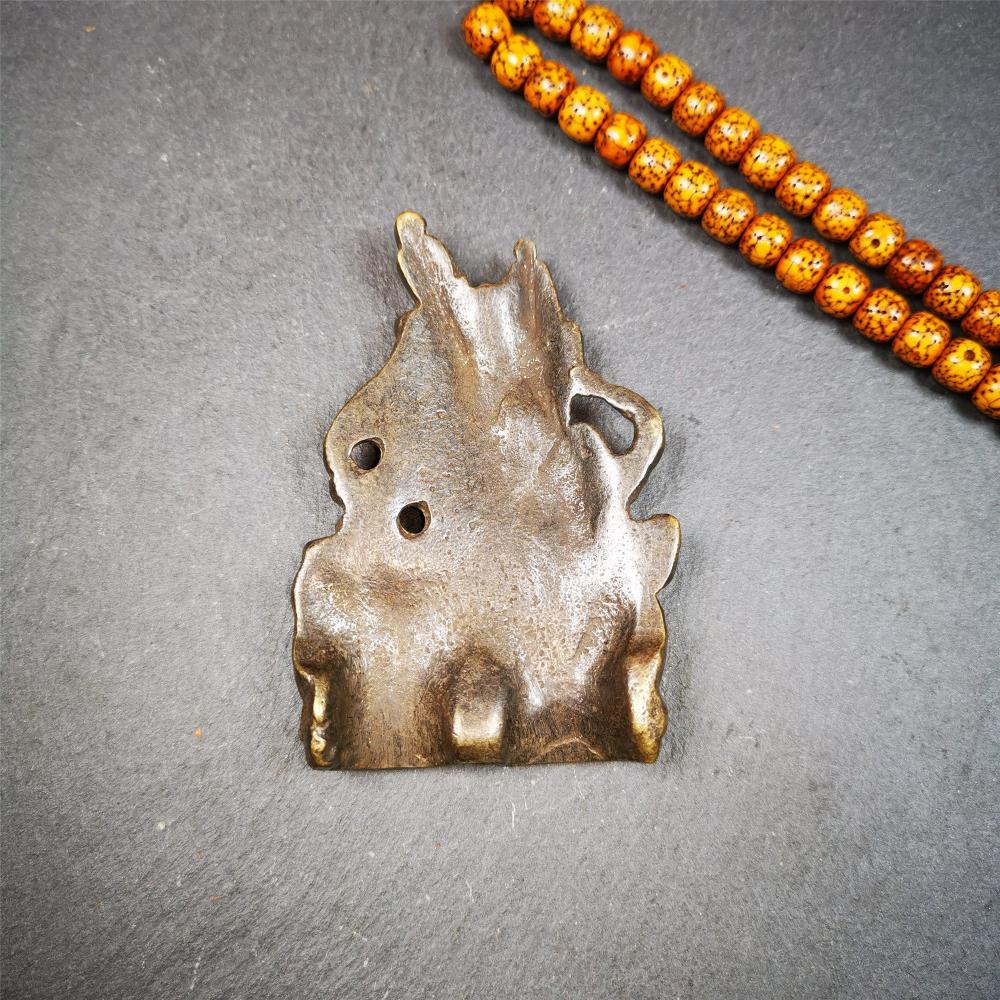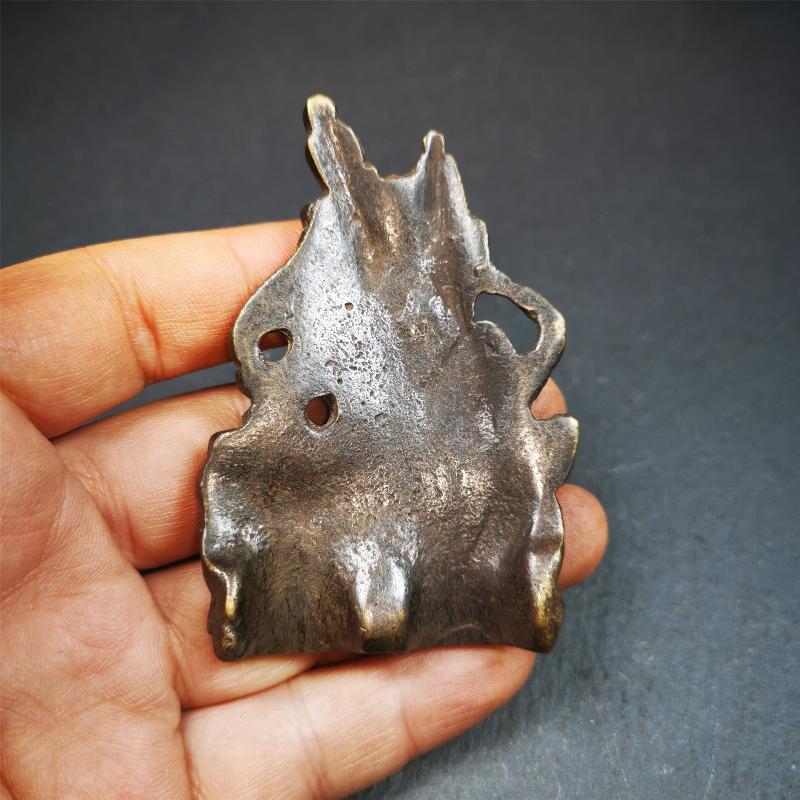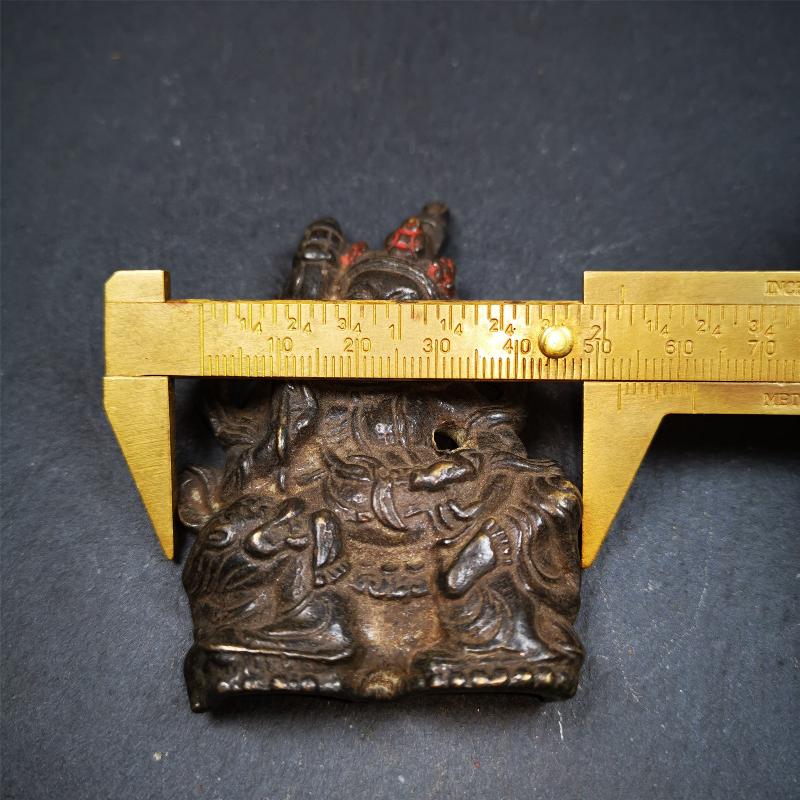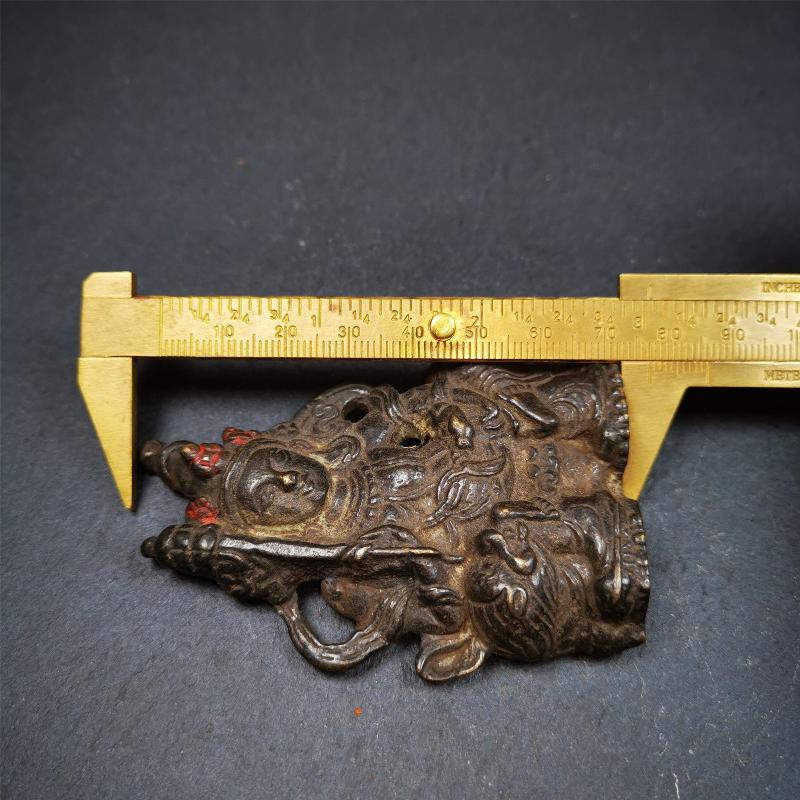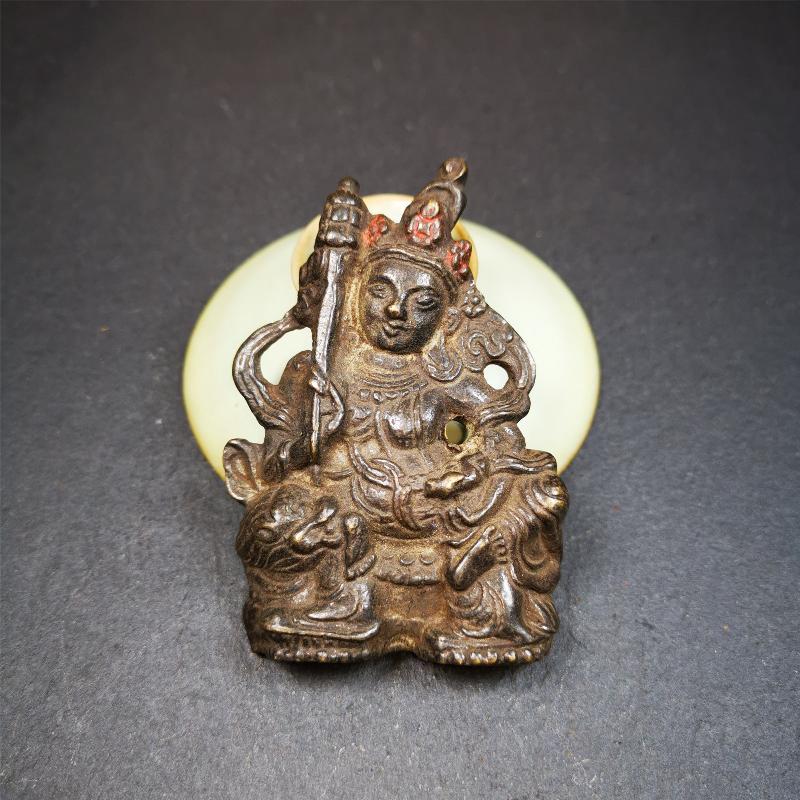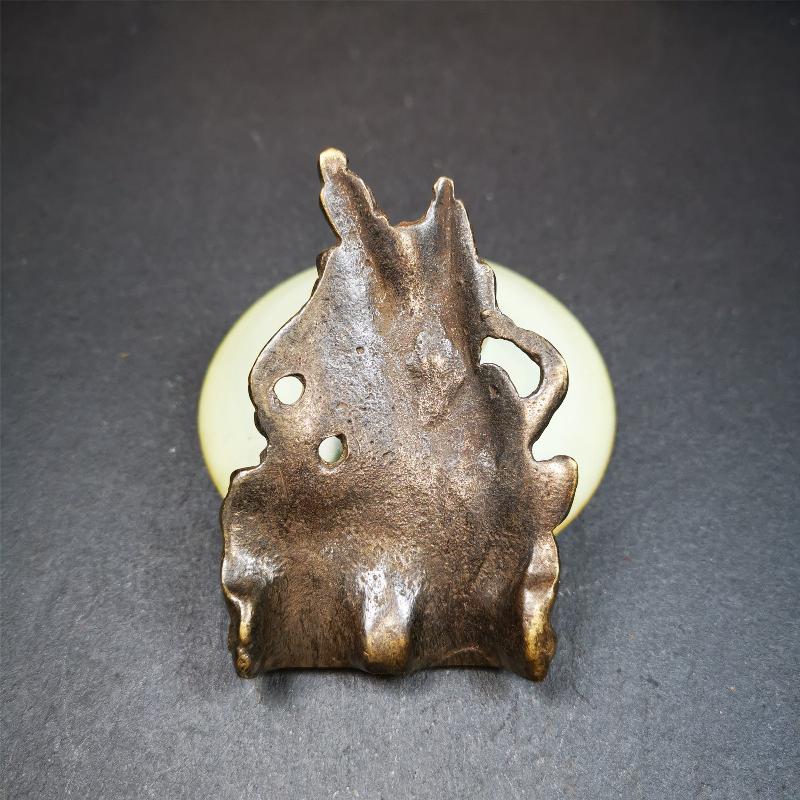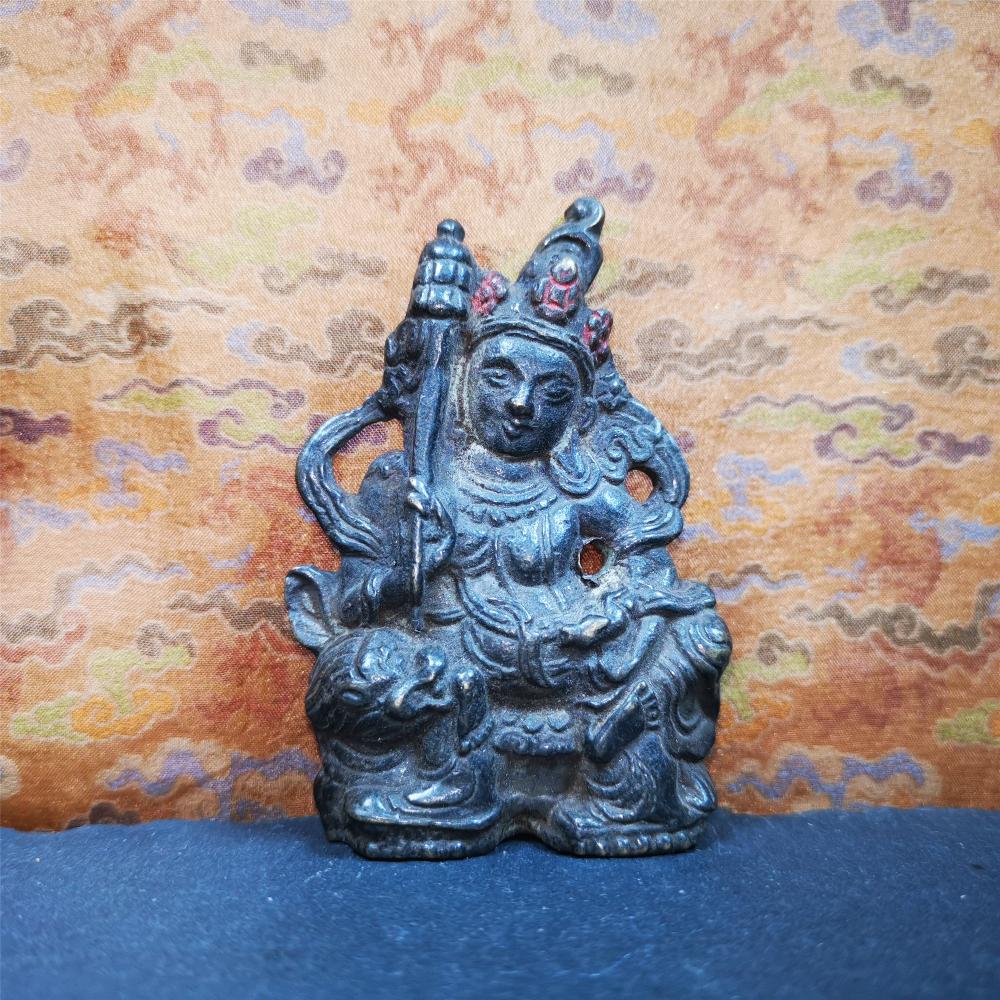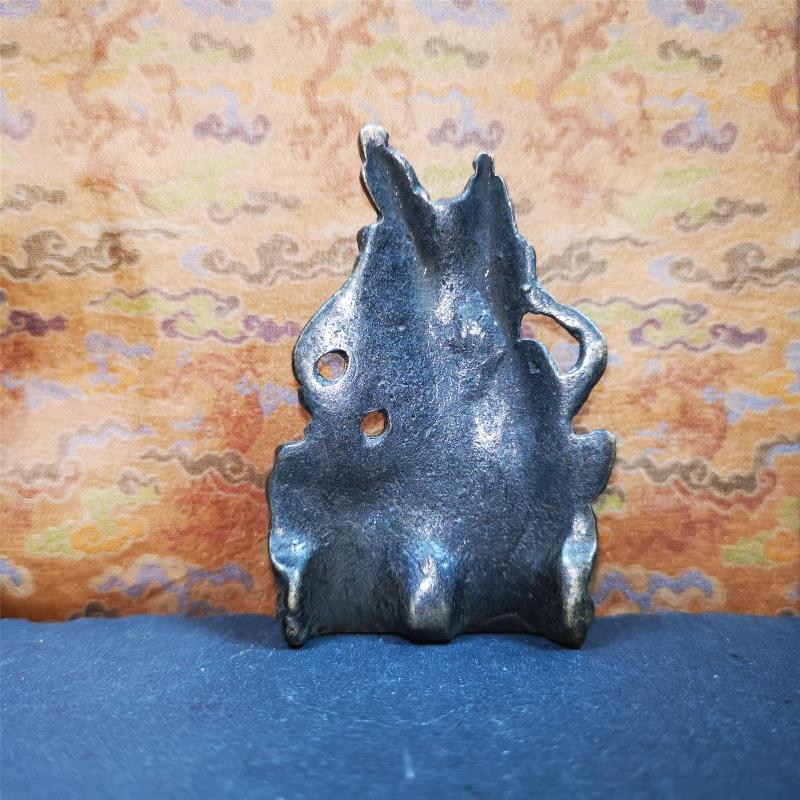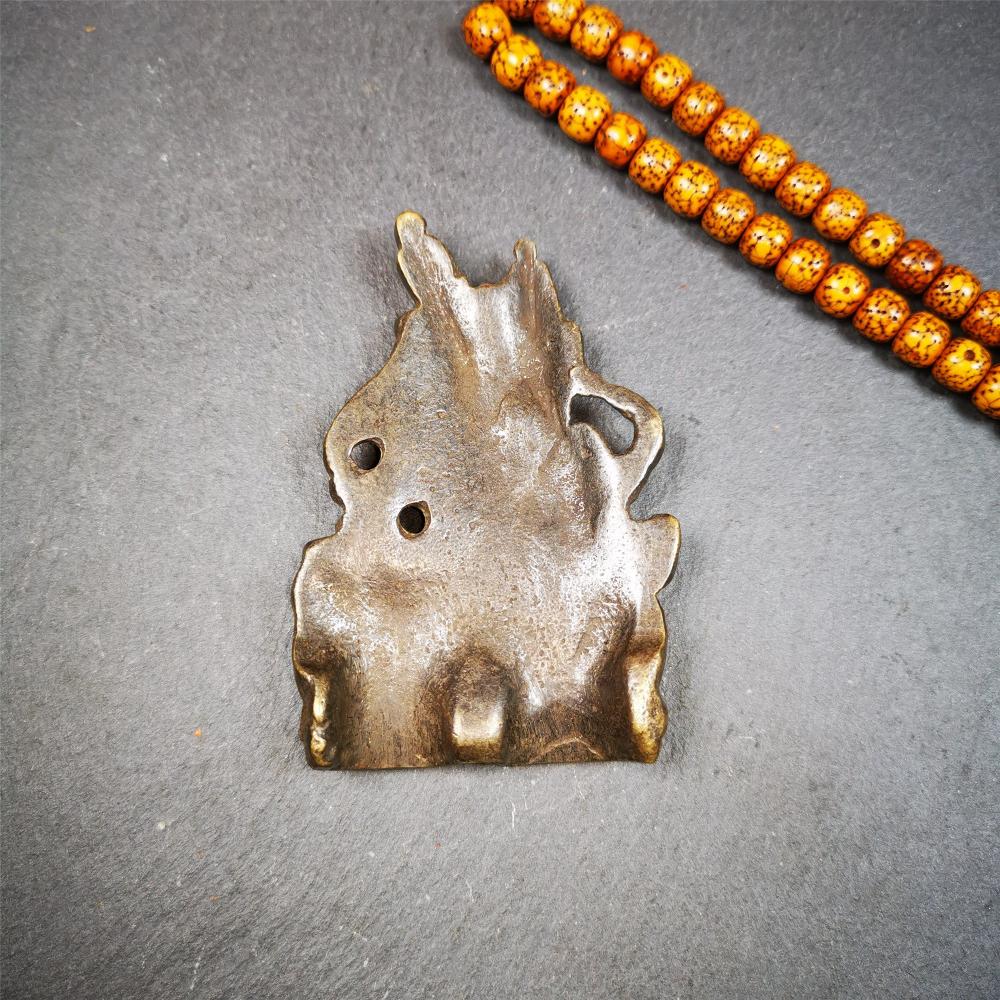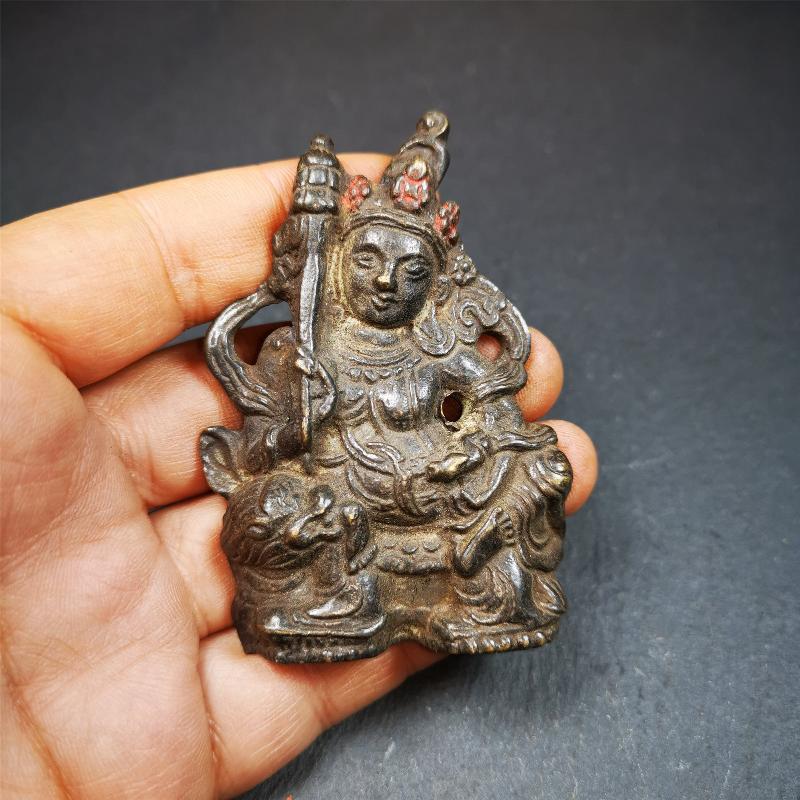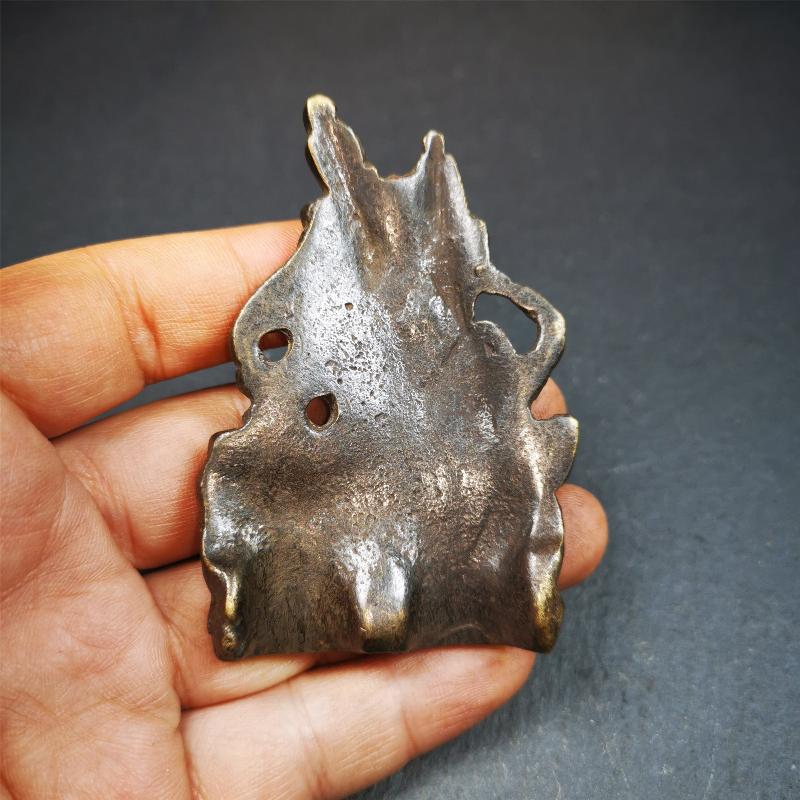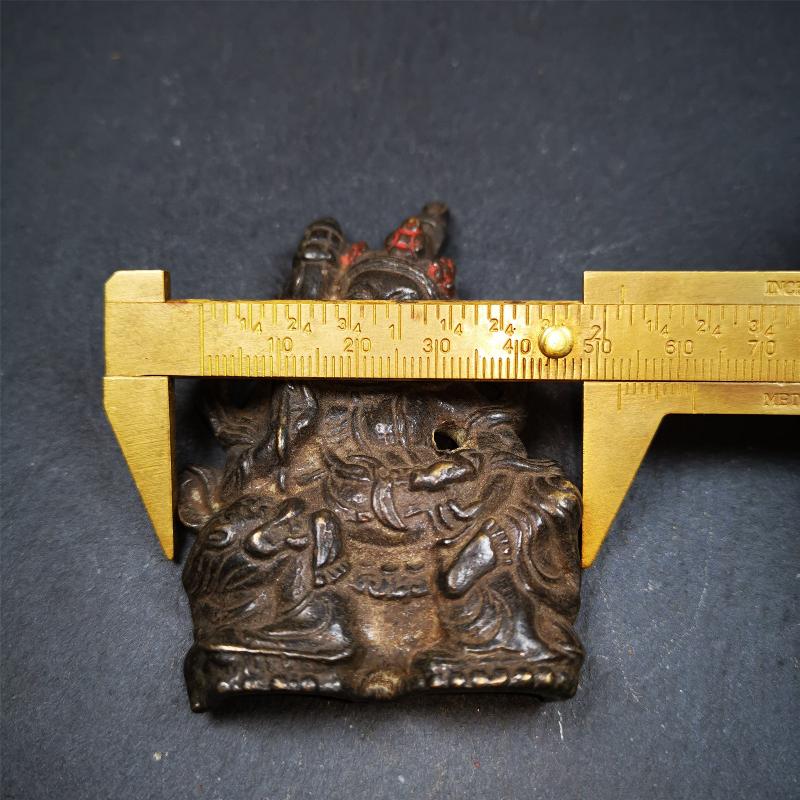Vaisravana 3.0"
Vaisravana 3.0"
Couldn't load pickup availability
❤This Vaisravana statue was collected from Samye Monastray, the first monastery in Tibet,and important Nyingma monsatery.
It's an old-fashioned green tara statue,about 60 years old,made of copper and painted with mineral pigments.
In Tibet, Vaisravana is considered a lokapala or dharmapala in the retinue of Ratnasambhava.
❤Details
100% Handmade
Pendant material:copper
Pattern:Vaisravana
Height: 77mm / 3.0 inches
Width: 53mm / 2.1 inches
Thickness:12mm / 0.47 inch
❤ ABOUT Vaisravana
Vaisravana is the guardian of the northern direction, and his home is in the northern quadrant of the topmost tier of the lower half of Sumeru. He is the leader of all the yakṣas who dwell on the Sumeru's slopes.
He is often portrayed with a yellow face. He carries an umbrella or parasol (chatra) as a symbol of his sovereignty. He is also sometimes displayed with a mongoose, often shown ejecting jewels from its mouth. The mongoose is the enemy of the snake, a symbol of greed or hatred; the ejection of jewels represents generosity.
In Tibet, Vaisravana is considered a lokapala or dharmapala in the retinue of Ratnasambhava.He is also known as the King of the North. As guardian of the north, he is often depicted on temple murals outside the main door. He is also thought of as a god of wealth. As such, Vaiśravaṇa is sometimes portrayed carrying a citron, the fruit of the jambhara tree, a pun on another name of his, Jambhala. The fruit helps distinguish him iconically from depictions of Kuvera. He is sometimes represented as corpulent and covered with jewels. When shown seated, his right foot is generally pendant and supported by a lotus-flower on which is a conch shell. His mount is a snow lion. Tibetan Buddhists consider Jambhala's sentiment regarding wealth to be providing freedom by way of bestowing prosperity, so that one may focus on the path or spirituality rather than on the materiality and temporality of that wealth.
